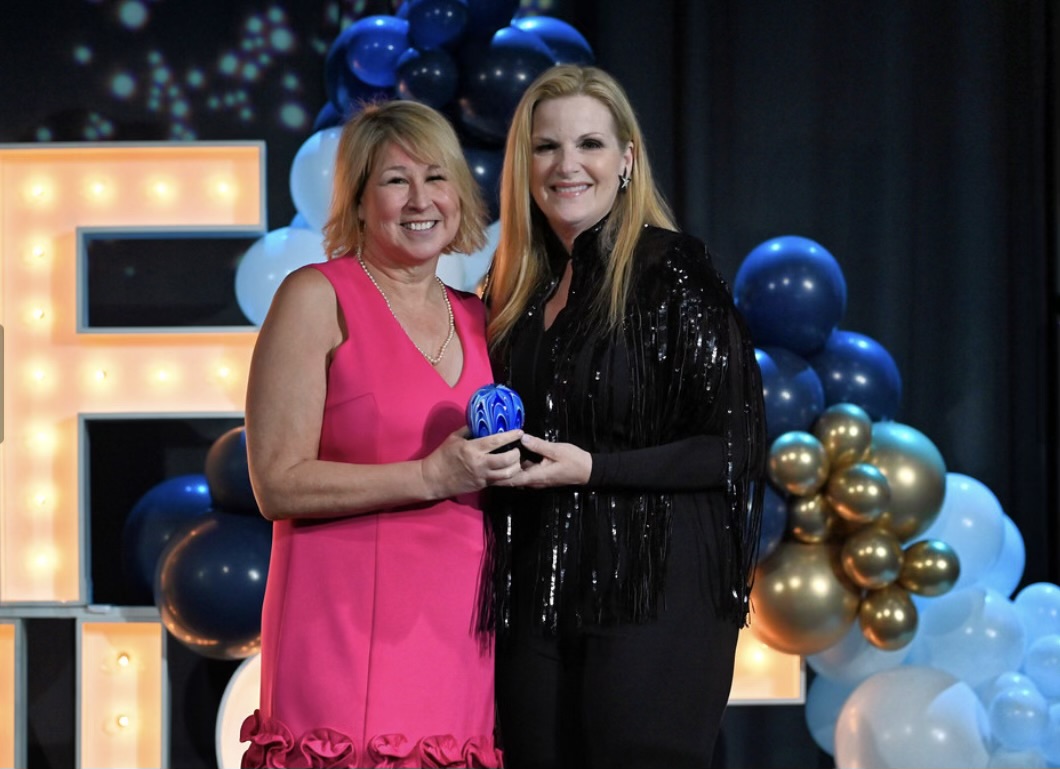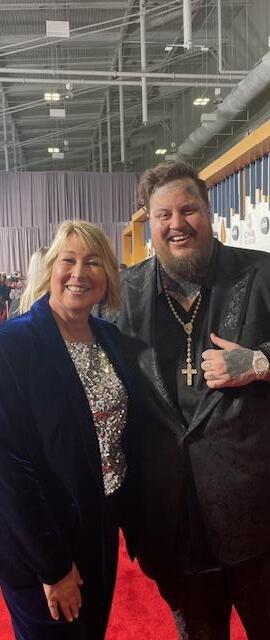
Editor’s note: This blog was written by Ginger Vieira, special contributor to Breakthrough T1D.
“Type 1 does not define me,” said Sarah Trahern, CEO of the Country Music Association (CMA). “In fact, it is not in the top 10 list of adjectives when I think about how I show up in my life.”

Sarah leads the trade association responsible for some of the world’s largest country music events, including CMA Fest and the CMA Awards. She also serves as President of the CMA Foundation, which funds music education programs across the country.
Sarah was diagnosed in 2019 with type 1 diabetes (T1D), about one week before CMA Fest. While preparing for an event that hosts 100,000 country music fans in Nashville, TN, she juggled learning how to take insulin and check her blood glucose.
“The day after my diagnosis, I called three friends,” recalled Sarah, two of whom are in the entertainment industry, and the other has a son with T1D. “Jillian Ellis is a dear friend and a TV producer I have worked with for 30 years. I have watched her navigate T1D in a variety of settings.”
Sarah recalled learning about continuous glucose monitoring (CGM) technology before her diagnosis from country music artist and songwriter, Eric Pasley.
“On one trip, he walked me through his Dexcom—how it helps him on stage and how his road manager and wife can track his numbers. I thought, how amazing! Little did I know that I would need one in a few years.”
Throughout that four-day festival, Jillian and Eric repeatedly checked in on Sarah. They encouraged her to choose simpler foods until she learned more about dosing insulin for carbohydrates while helping her gradually make sense of it all.
“Since then, the community of Type 1s in my life has grown, and I have tried to pay forward the help that my friends gave to me at that critical time.”
Grateful for technology
Clearly a powerhouse businesswoman, Sarah admits there are often days when T1D is on the back burner.
“I would have struggled greatly in a T1D world without technology, particularly a CGM,” said Sarah. “I tend to go pretty hard without a lot of breaks and don’t often think about myself in the process. Having type 1 forces me to check in on myself regularly since my work requires me to show up for a lot of people every single day. It is the ultimate example of needing to ‘put your own mask on first’ before taking care of others.”
Without today’s technology options, Sarah suspects life with T1D may get in the way of her packed schedule a bit more.
“I am pretty self-sufficient and practical, but I do run full speed at all times,” said Sarah. “Technology allows me to do that. I am thankful to Breakthrough T1D and the scientists who made technology accessible. Having a closed loop and sleeping through the night is a godsend.”
Even CEOs have difficult diabetes days
“For me, the first was the time my husband ‘saved my life’ when I was out of town at a remote hotel for a board meeting and my phone wasn’t alarming, but his phone was,” recalled Sarah. “He called and woke me up at 3 a.m. and I drank some OJ. He often reminds me that he is a lifesaver!”
Sarah’s husband keeps a close eye on her blood glucose levels, knowing she’s intensely focused on her work.
“There are some days when my husband will just send me a screenshot of my CGM on his phone with the note, ‘I assume you are taking care of this?’ It is so frustrating when you are doing everything right, and the numbers don’t move.”
She’s also found herself giving a presentation to several hundred people while her blood glucose level was dropping. Normally, she’d keep a bottle of juice nearby to sip throughout her lecture, but this time she forgot.
“So I had to stop the lecture, grab some tabs from my purse, explain the situation to everyone in the room, and chew, chew, chew,” remembered Sarah.
“You do have to plan everything, from how you pack supplies for a long trip outside of the country, to what to take on a strenuous hike, to how to get your phone and your OJ to the podium when you are the commencement speaker and your robe doesn’t have pockets. But all of those inconveniences sure beat being in the hospital. Planning is a key part of life for any T1D.”
Gratitude and perspective
“I think perspective is always a healthy thing, in any situation,” said Sarah. “Yes, it can be challenging, but be thankful that we have technology and cutting-edge medicine—and now, affordable insulin.”
Sarah has contributed her time and financial support to Breakthrough T1D over the years, fueling life-changing research and technology.
“Early on [in my diagnosis], I was part of a tour of the labs at Vanderbilt where they are doing some of the important Breakthrough T1D-funded research,” recalled Sarah. “I was so impressed by the drive and passion of the researchers that I got on board to help support those important research efforts. The friendships I have made through the Breakthrough T1D community are so honest and valuable.”